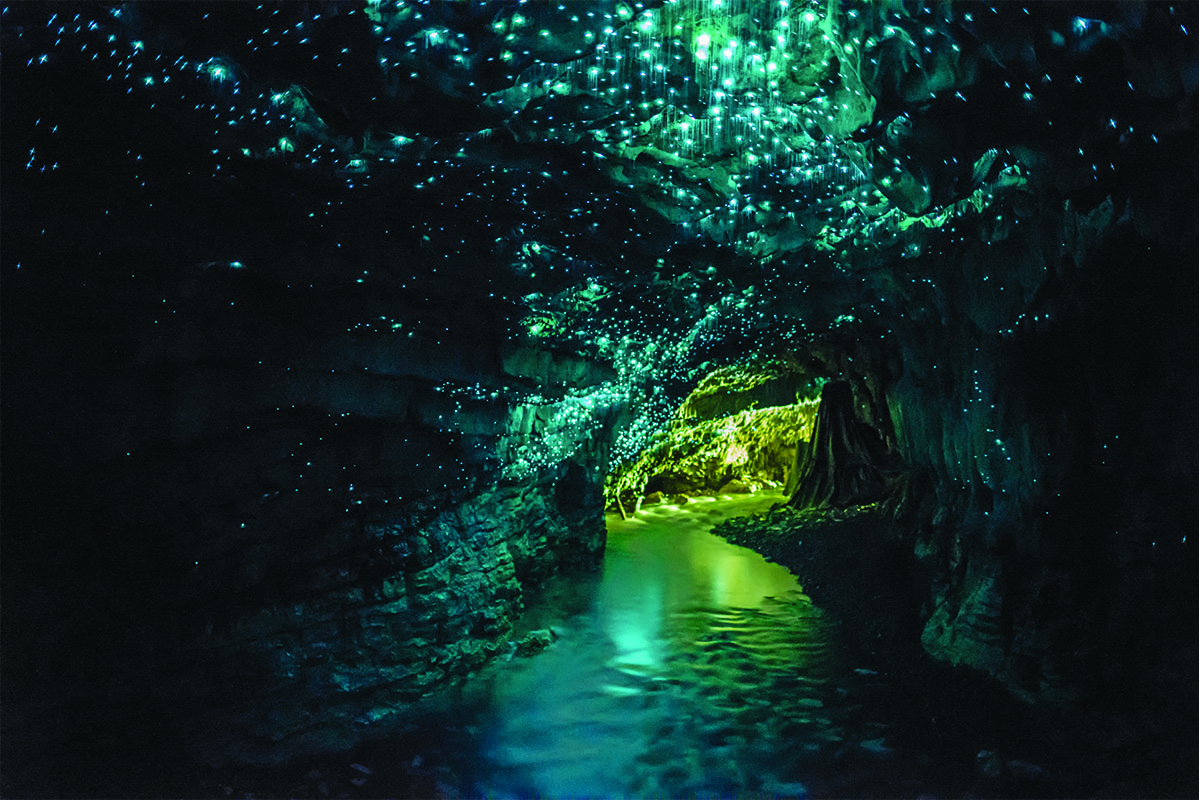Atlas Obscura Offers a Reference Book for Wonder Seekers

Waitomo Glowworm Caves Image by Martin Rietze
One seriously worldly, unusual and vast reference book, called Atlas Obscura, was released on September 20. Its densely packed 470 pages features maps and photos and profiles of unusual places on all continents, whether it’s the still-standing Ferris wheel in the town near Chernobyl, a falcon hospital in Abu Dhabi, an elaborated church built within a Polish salt mine, or a 500-year-old grass bridge in Peru that dates back to the Incas. The hefty tome is an alluring compendium of awe-inspiring adventure and information, and now the three authors—Joshua Foer, Dylan Thuras, and Ella Morton—are on tour hosting their launch events in some of the sites from the Atlas. On September 28 they’ll be signing books at Chestnut Hill’s steampunk Metropolitan Waterworks Museum.
The book is an outgrowth from the popular website of the same name. Back in 2009, writer Joshua Foer was best known for his book about science and memory, Moonwalking with Einstein, when he joined up with friend Dylan Thuras to create an online portal that would compile the strange and sublime places on the planet.
“We created it almost like an art project,” Foer says. “We made it for people like us, who want to know about wondrous and curious spots around the world. It would be a user-generated and crowd-sourced website featuring places people might not know about, and it just grew and grew from there. A fun side project became a real business.” Indeed, Atlas Obscura has attracted quite an audience, with the website boasting 5 million unique visitors per month and more than 560,000 Facebook followers. Now the company has a full staff, has established explorers’ “societies” in seven cities (Boston’s may be launched as soon as this year), and is now offering guided tours to countries like Bulgaria, Cuba, Iceland, and Myanmar.
The audience is not only how Foer and Thuras focuses their business, but also how they have sourced much of their copy. People around the world submit unheralded but jawdropping things to see, such as colossal Yugoslavian monuments from the Communist era to a Carhenge sculpture made of junked autos in Nebraska. Odd museums, weird graves, urban ruins, and otherworldly land formations abound. A team of editors shapes the copy, and every entry is fact-checked to ensure that these surreal places are indeed real. With its startling photographs and witty copy, the website manages to recreate a sense of mystery about the world, in an era where the globe feels continually smaller.
“Every day people are adding places to the online Atlas,” Foer laughs, “and we view them like, ‘Holy cow, how did we not know that we live on Planet Earth with this?’ We are constantly discovering places through our users and contributors.”
More than 10,000 places are featured online, Foer says, with some 3,000 to 4,000 sitting in the editorial queue waiting to be published. So how did he, Thuras, and Morton winnow the choices down to the 600 or so in the book over the six years it took to produce the book?
“It was a frustrating process, truly,” Foer says. “This book could have been twice as long and not lose anything in terms of quality. But you can’t beat the tangible feeling of paper in your hand. The web is potentially infinite but there’s something to be said about making finite choices of what to include. The book is heavy and big and it’s an object – this ethereal thing on the web is now something that you can hold in your hands.” A second volume is already in the works.
And as for Foer’s favorite local wonders? First there’s the Warren Anatomical Museum at Harvard, which features the famous skull of Phineas Gage, the 19th century railroad worker whose head was accidently pierced by an iron tamping rod and whose case famously revealed the link between brain trauma and personality change. And there’s the Mapparium at the Mary Baker Eddy Library: “It’s the biggest inside-out geographically accurate globe in the world,” Foer says. “It’s the only place where you can stand inside the world and look out at it without false perspective. What a unique spot.”
$20, Wednesday, September 28, 7:30 p.m., Waterworks Museum, 2450 Beacon St., Boston, 617-277-0065, waterworksmuseum.org.


